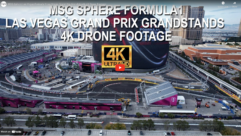
Green Kiosks Interact with Mobile Phones, Part 1
Dec 9, 2008 12:00 PM,
By John W. DeWitt

At Mesa Riverview shopping center in Mesa, Ariz., shoppers use EcoMedia’s touchscreen kiosks, powered by Aerva software, to select coupons and have them sent via text message to their mobile phones.
Environmental media company EcoMedia has deployed more than two dozen digital screens along with several interactive kiosks at Mesa Riverview, Kimco Realty’s 1.3-million-square-foot shopping center in Mesa, Ariz. Following EcoMedia’s business model, which funds local green initiatives with up to 50 percent of its advertising revenues, the signs and kiosks combine paid tenant promotions with environmental programming—e.g., profiles of celebrities who have “greened” their homes and energy-saving tips for consumers. The touchscreen kiosks even dispense coupons in an environmentally manner—via text message to shoppers’ mobile phones. Now, with technology partner Aerva, EcoMedia is rolling out its green kiosks and signage to additional 20 shopping centers around the country. Digital Signage Update talked about the technology behind the network with Sanjay Manandhar, CEO of Cambridge, Mass.-based Aerva.
SVC: How did Aerva get its start? What is your focus?
Manandhar: We started this company about four years ago. Our premise was to have interactivity between increasingly prevalent digital screens and people’s handsets, which are in everybody’s pockets and lots more feature-filled now. For the first few years, we primarily worked in Europe. Our first customers were nightclubs in Ireland—for example, we have onscreen polls about who is going to be the MVP of tonight’s game, and voting happens by cell phone. It also provided a venue for sponsors, so our customers, the nightclubs, made money from ad and sponsorship sales and from the uplift, increasing drink sales.
Our business model has been based around digital signage, but on top of that we have platform called MoApp, which allows mobile applications to operate on top of the signage platform.
Describe how your network and application operate in Mesa and similar deployments. How do consumers interact with your kiosks?
In Mesa, we use a mobile coupon application in conjunction with the touchscreen. You use the touchscreen to look for deals, and the application allows you to text a keyword to the number we provide for each participating retailer, then we send back a mobile coupon that can be presented via the mobile phone to the retailer you have selected. The program is operated by EcoMedia—they provide the green content—then Aerva provides the technology and the infrastructure to make all of this happen.
From Mesa, we’ve expanded to close to a dozen shopping centers, each with two to four touch-sensitive screens—32in. mounted portrait-mode panels. The screens are driven by appliances that we provide and are connected via the Net to our servers. EcoZone loads ads and sponsorships onto our server using nothing but a browser, and they can determine whether it belongs in New York, Mesa, or network-wide.
Green Kiosks Interact with Mobile Phones, Part 1
Dec 9, 2008 12:00 PM,
By John W. DeWitt
How do you handle connectivity? What are your hardware requirements?
We are network-access agnostic. We work on all kinds of players, from rackmount systems to little players no bigger than a notebook. Some have Wi-Fi connectivity, most have wired connection, a few have cellular connection.
An operator like Kimco has their own hardware procurement process. We just certify the hardware and have our software preloaded. They’re using an Intel-based player with 1GB of memory and 40GB of disk space. It’s fairly vanilla; when you’re doing large networks, keeping the hardware cost low is important. The kiosk screens are LG with a laminate touch-sensitive screen, though our software can work outside a touch environment.
What makes the mobile-phone coupon application work? Why don’t customers balk at interacting with the kiosk?
Their call to action is to send the keyword to this particular number. That message comes to our wireless gateway, which will then match the keyword to the discount and send a message back. It allows the shopper to very quickly opt in for something he or she is interested in and not have to put in the 10-digit cell-phone number in a public kiosk. We send the coupons back, and there are no visible target numbers. And because it’s an opt-in process, our rule is that the number cannot be used for follow-on solicitation.
What’s the format of the coupon? Do your advertisers worry about it getting forwarded?
Generally the coupon is a text message. We also can do 1D or 2D bar codes on smart phones. But it’s really the coupon ID that retailers care about. Generally they will have a button on the cash register that allows the cashier to key in the number.
There are different kinds of coupons. Single-use coupons will have a unique ID and cannot be used more than once, whereas generic coupons are just to generate traffic, and retailers don’t mind if they are used by multiple people. Typical coupons like the ones that EcoZone is doing are just to create demand—so they don’t care if you forward to all your friends.
The beauty of this coupon is that you don’t forget it at home, you don’t have to snip it and put it in your pocket, it’s in your cell phone and you carry it anywhere you go.
In the next issue, Digital Signage Update’s conversation with Manandhar will explore the deployment challenges and future trends for interactive applications between mobile phones and digital signage.
For more information, visit www.aerva.com and www.ecozonemedia.com.










